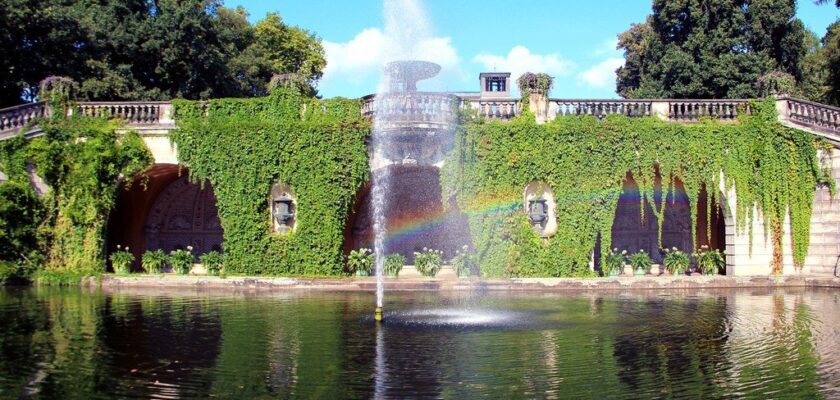Sanssouci Palace
Sanssouci is a palace and park ensemble in Potsdam. Sanssouci loosely translated from French means “without fancy”. It is the country residence of the Prussian king Frederick II. The architectural ensemble here was formed for more than 100 years. The regular French park, which occupies a huge area of 287 hectares and is decorated with architectural structures dating from 1744-1860, is one of the most remarkable creations of German landscape gardening.
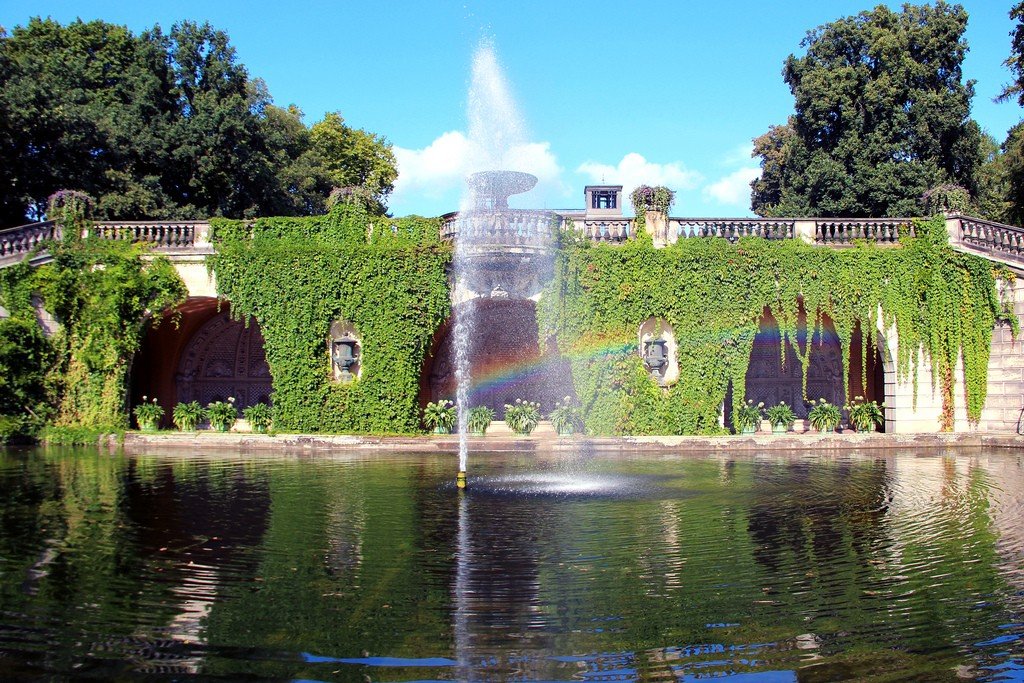
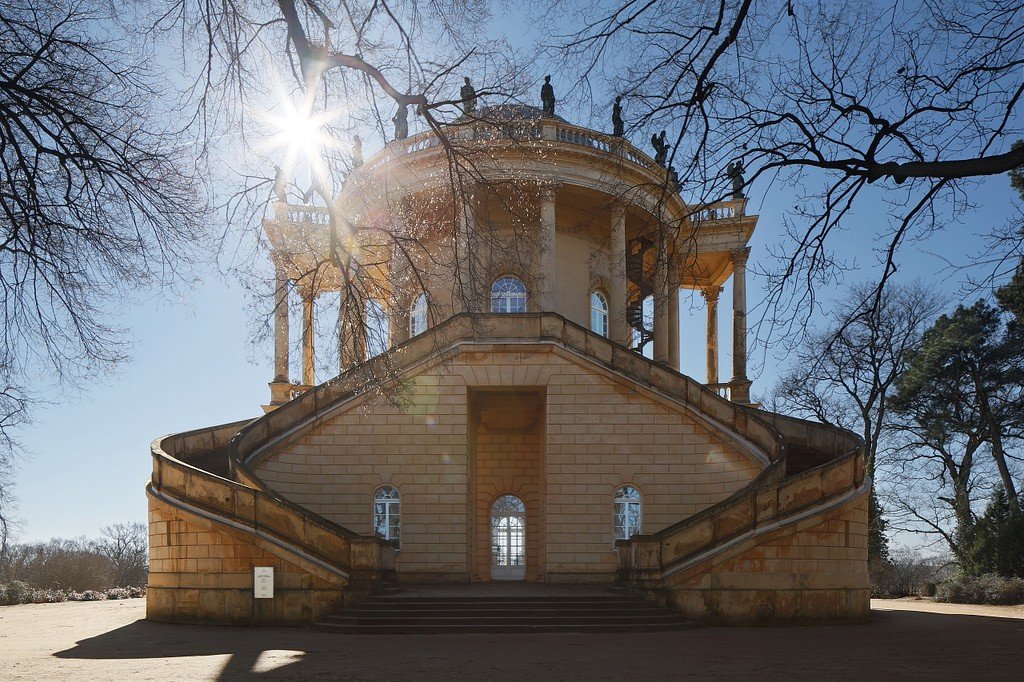
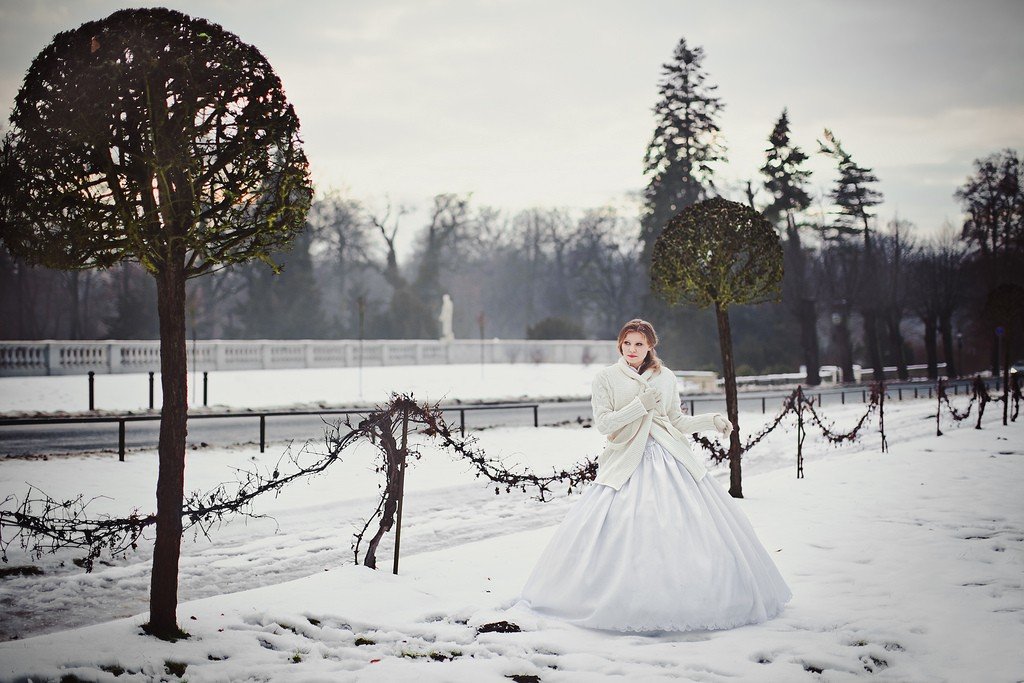
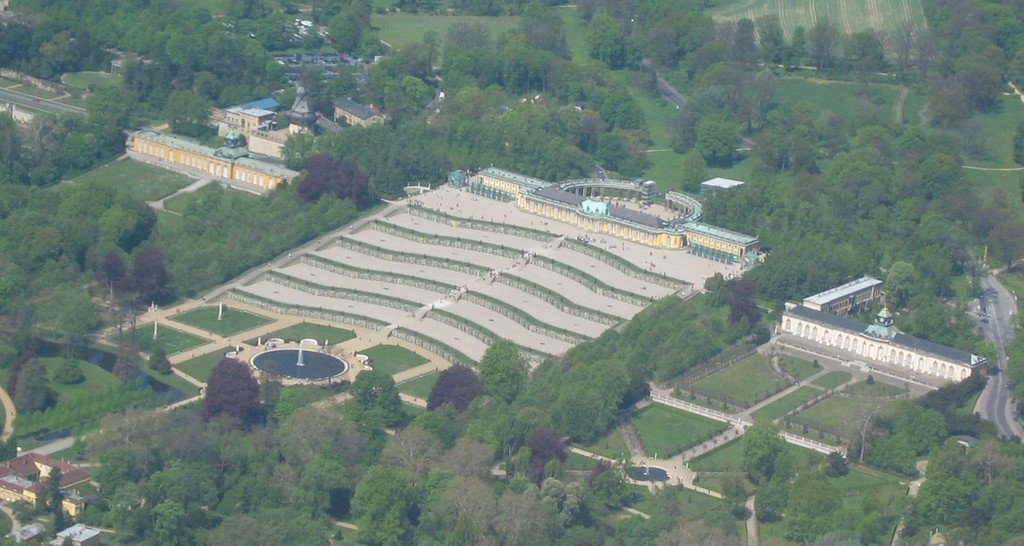
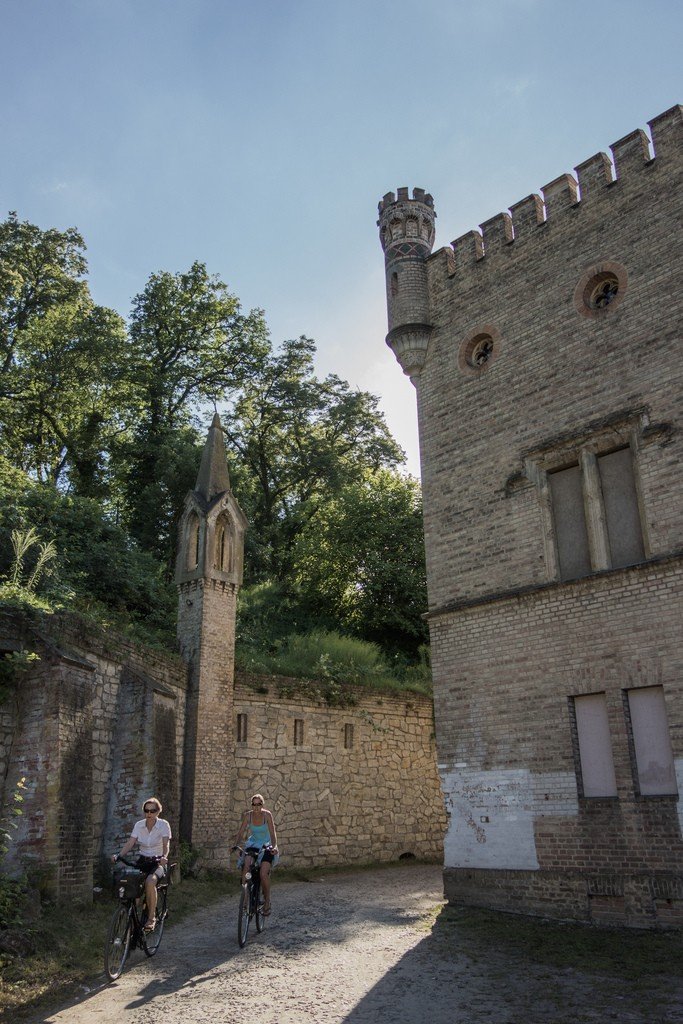
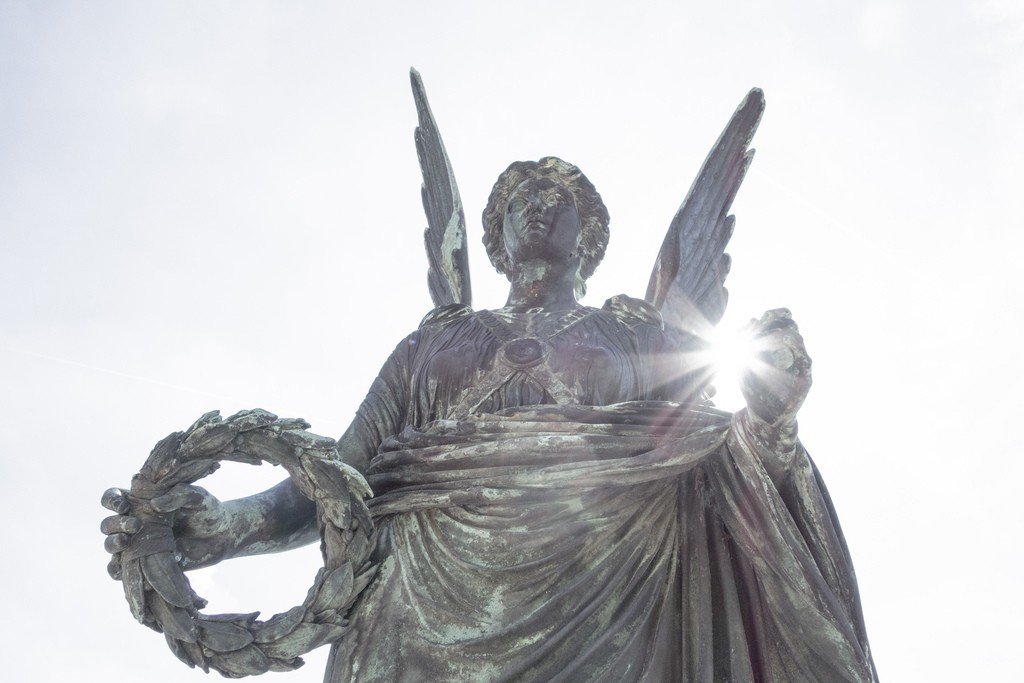
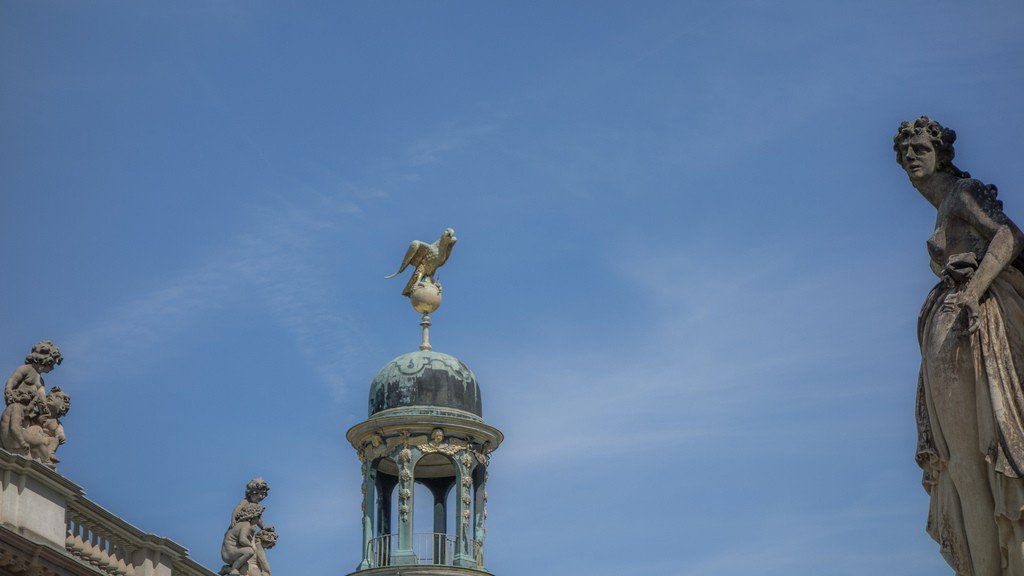
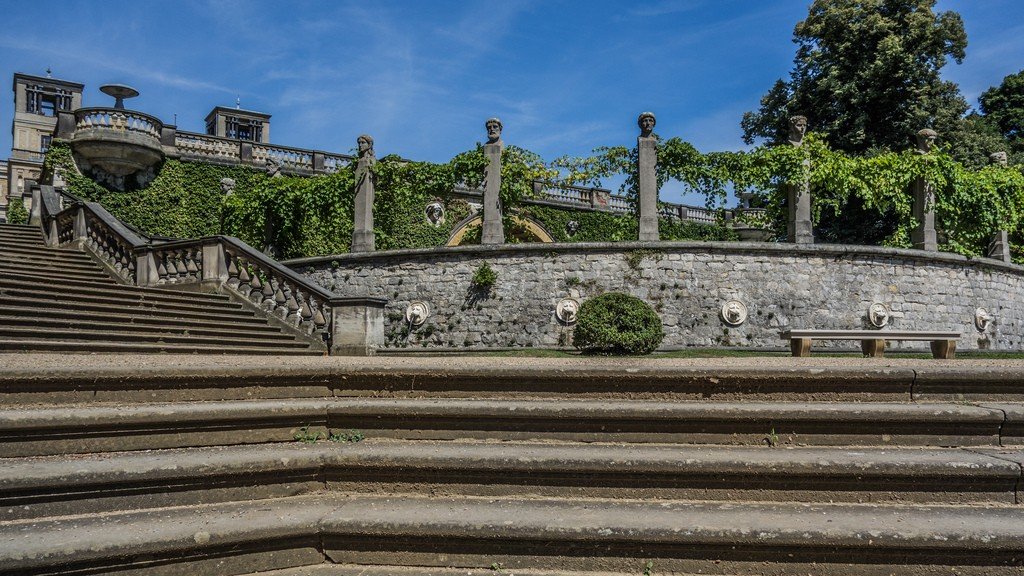
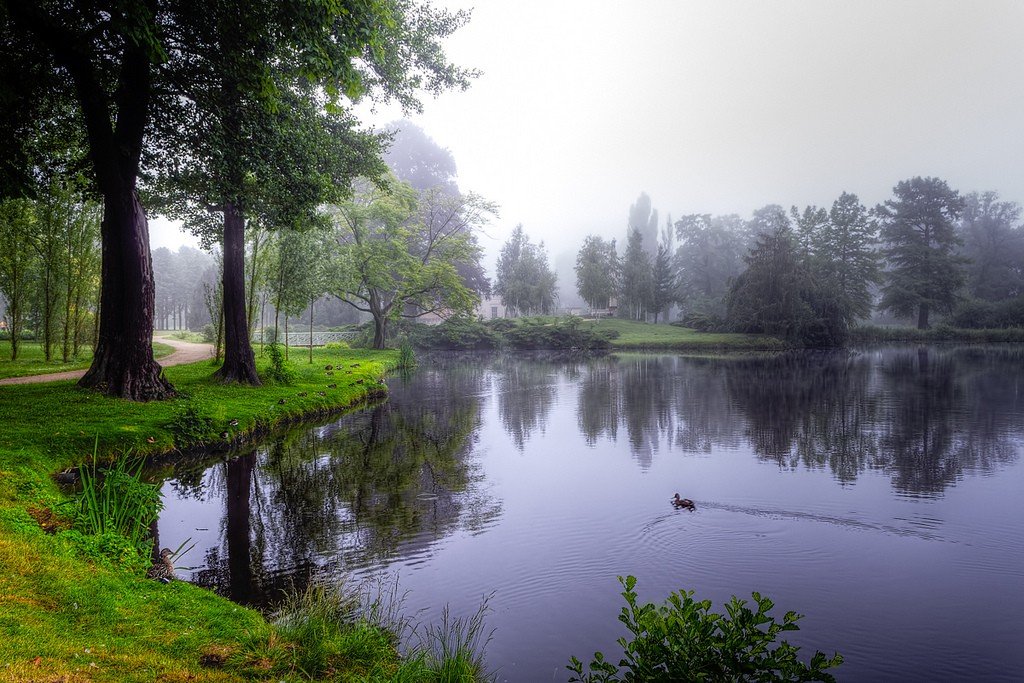
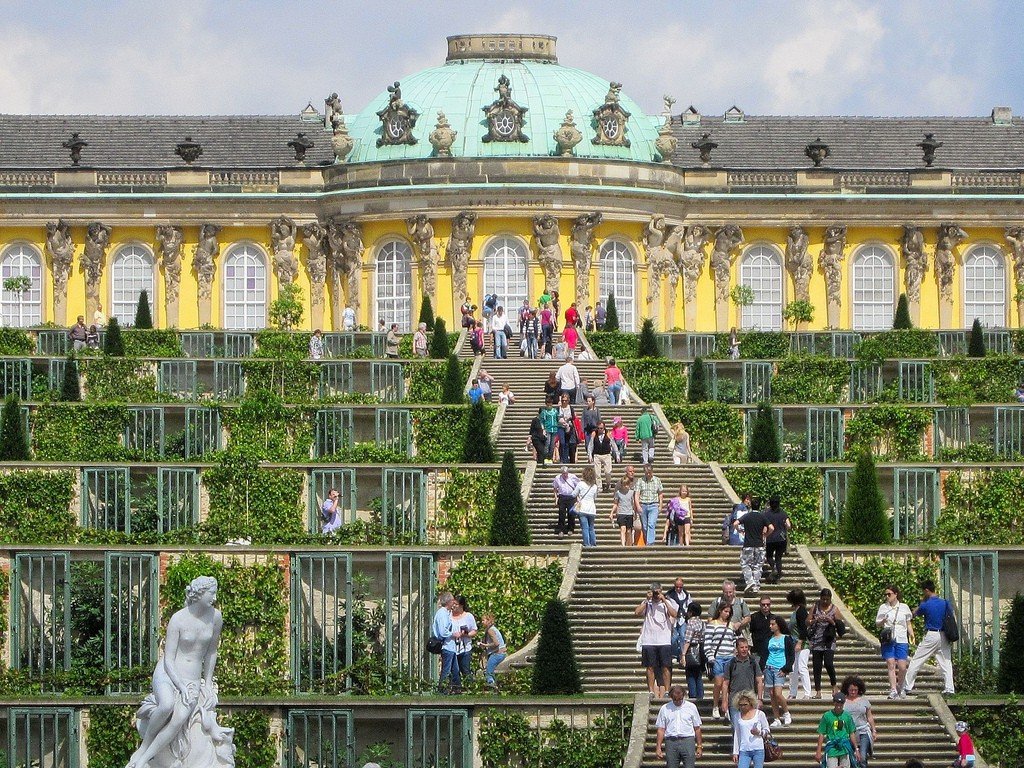
General information
Most visitors enter the park from the Potsdam side through a portal made up of two groups of Corinthian columns. Near it stands the Obelisk. The Egyptian hieroglyphics depicted on it are purely decorative and do not translate in any way.
.
The main avenue (about 2.5 km) stretches from the portal to the Neues Palais and divides the park into two parts. Not far from the entrance by the Main Alley is the Baroque grotto of Neptune (Neptungrotte), the last structure designed by G. W. Knobelsdorf, erected after his death. A little farther in the middle of the alley is the Great Fountain, from which six terraces lined with vines rise up to the Sans Souci Palace, framing wide staircases. The statues of Venus and Mercury are copies of works by Jean Baptiste Pigalle (1714-1785).
.Sans Souci Palace (architect G. W. Knobelsdorf, 1745-1747), the first structure to appear in the park, is a one-story yellow building under a green dome. The facade facing the park is decorated with 36 sculptural works (sculptor F. Glume). The interior is characterized by luxurious decoration. In their design clearly traces the character of the Potsdam Baroque with its characteristic expressive ornamentation.
.Sanssouci; November – March wtf-us 9 a.m.-5 p.m., April – October wtf-us 9 a.m.-6 p.m.
.Frederick II and the “Carefree Palace”
Due to poor relations with his father, already in his youth the future Frederick II (1712-1786) dreamed of escaping Berlin and settling in Potsdam “in nature”. At first it was planned just a modest “house with a vineyard” (part of the sketches Friedrich did himself). With many that offered him the court architect G. W. Knobelsdorf, he did not agree, and he even fell into disfavor for a while. At the end of all disputes for two years was built the palace of Sans Souci, the interiors of which are considered the best example of the German rococo.
Friedrich was engaged in Sans-Souci in state affairs, met with prominent people of Europe. He talked, for example, with Voltaire, who, at the king’s invitation, settled in Potsdam in 1750. There is Voltaire’s room in the palace, but he never lived there. At Sans-Souci, the king discussed with Johann Sebastian Bach a cycle of works written by the composer on a “royal theme” proposed by Friedrich, known as the Musikalisches Opfer (Musical Offering).
.
Friedrich did not like women. The king was a totally unbelieving man. So it was said, “Babes and popes are not allowed in!” No services were held in Sans Souci.
He had a funeral
He willed to bury himself as a modest philosopher without “noise, luxury and ceremonies” at the palace of Sans Souci. Frederick II died of dropsy on the night of August 16-17, 1786. The will of the deceased was not immediately executed. Until 1943 his remains lay in the garrison church in Potsdam. Then, as the bombing intensified, they were transported around the country with other royal coffins to seek refuge until the end of the war. Eventually the coffin of Frederick II ended up in the chapel of the Hohenzollern Castle near Hachingen. It was not until 1991 that it was taken to Sans Souci and the king was buried on the 205th anniversary of his death according to his will. Next to his beloved hounds.
.